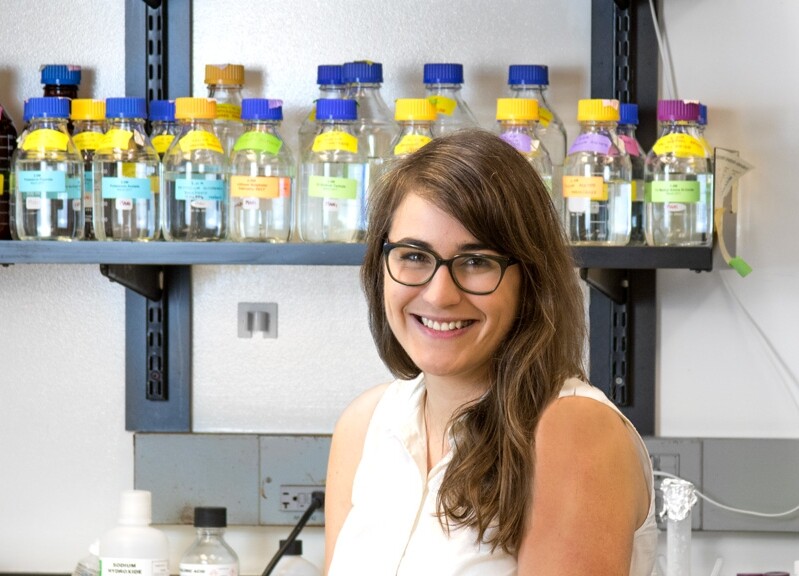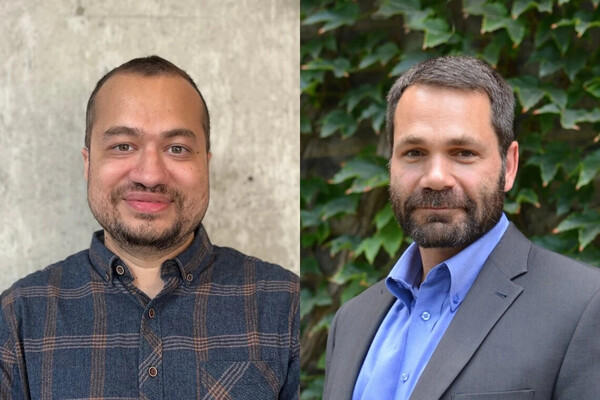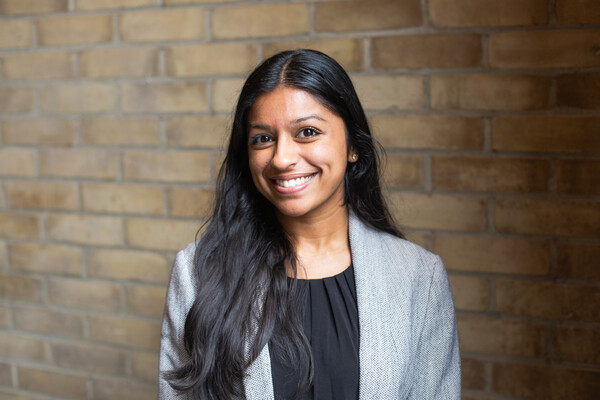Mobile Menu
- Education
- Research
-
Students
- High School Outreach
- Undergraduate & Beyond: Community of Support
- Current Students
- Faculty & Staff
- Alumni
- News & Events
- Giving
- About


Last year, Rachel Harding became the first biomedical scientist to publish her lab results in real time. Her goal was to speed research advances on Huntington’s disease, a rare and incurable genetic disorder that destroys brain cells.
The idea was that by sharing data right away on her site, Lab Scribbles — rather than waiting months or years to publish in a journal — other scientists wouldn’t duplicate her unproductive experiments and could instead follow promising leads.
The approach came with risks, notably that other researchers might scoop data and use it to publish papers and garner funding. But eighteen months later, the project is bearing fruit.
Harding, a postdoctoral fellow in the lab of Professor Cheryl Arrowsmith and member of the Structural Genomics Consortium, spoke with Faculty of Medicine writer Jim Oldfield about her open lab notebook.
What’s it been like to share your results with the world?
Overall, the most exciting thing has been the involvement of other scientists. We’ve built a network of collaborators who are contributing their scientific expertise as we generate our data in real time. We’re getting input from senior people in the field, critiques on our experiments and what the data means in a broader context. We’re really pleased with that. And we’ve been able to advance the science much faster than we anticipated. There’s no direct comparison or control, but I definitely feel if we’d gone about our research in the usual closed way, we wouldn’t have seen such progress.
What progress have you seen?
We’re most excited that so many people around the world are asking for our reagents, after seeing in detail how we generate them. We’re now able to make large amounts of huntingtin protein, and there haven’t been many freely available reagents to do that. Reagents are generally proprietary and it usually takes a long time to share them, so that’s a big change. Most times, people are happy to share back the results of their experiments, which is another benefit. On the flip side, different labs have varying degrees of openness, which is sometimes hard to gage. So we have to work through that with each group. We try to follow open science mantra, ‘As open as possible, as closed as necessary.’ We don’t want to dissuade anyone from working with us.
How has this approach benefitted the science on Huntington’s?
We’re just starting to understand what the huntingtin protein looks like. Huntington’s disease (HD) is a single gene disorder. The huntingtin gene encodes the huntingtin protein, and we want to know what that protein looks like — its 3D shape and structure — in the general population and in people with the disease. Previously, you could buy the protein but it was really expensive. With more labs using our reagents to study the protein, we should gain better insight into the disease. As well, I’m doing my own structural biology experiments on the huntingtin protein, with cryo electron microscopy. That work had been limited because we didn’t have samples, whereas now we’re getting the best samples possible.
What challenges have you faced?
We realized very early on that providing updates on our results every day was time consuming. So we moved toward giving reports once they were more complete, roughly every five days. We also found that was more useful for others, because it was easier to read and the information was more complete and more searchable. Another big challenge is the worry that someone will take all the data and scoop us. Researchers in other fields have published in real time for years, but there has been less inclination toward it in medical science, unfortunately. But things are changing. Many career researchers are frustrated with our lack of progress in treating rare diseases. The Gates Foundation and other funders want to see more data sharing. I have a lot of faith that fellow HD researchers are more interested in working together than competitively and so far that’s proven true.
Will you keep publishing openly?
For sure. It’s opened so many doors for me, which I didn’t think about when we started the project. I’ve been invited to conferences locally and globally, which has been great for learning about other research and helping me connect with the open science community. It’s also put me in touch with advocacy organizations that have shared my posts, and with patients and family members. It’s been really interesting to engage with those communities. One of the big arguments for open science is that it helps engage the very people who fund our work — and who will hopefully benefit from it one day.

